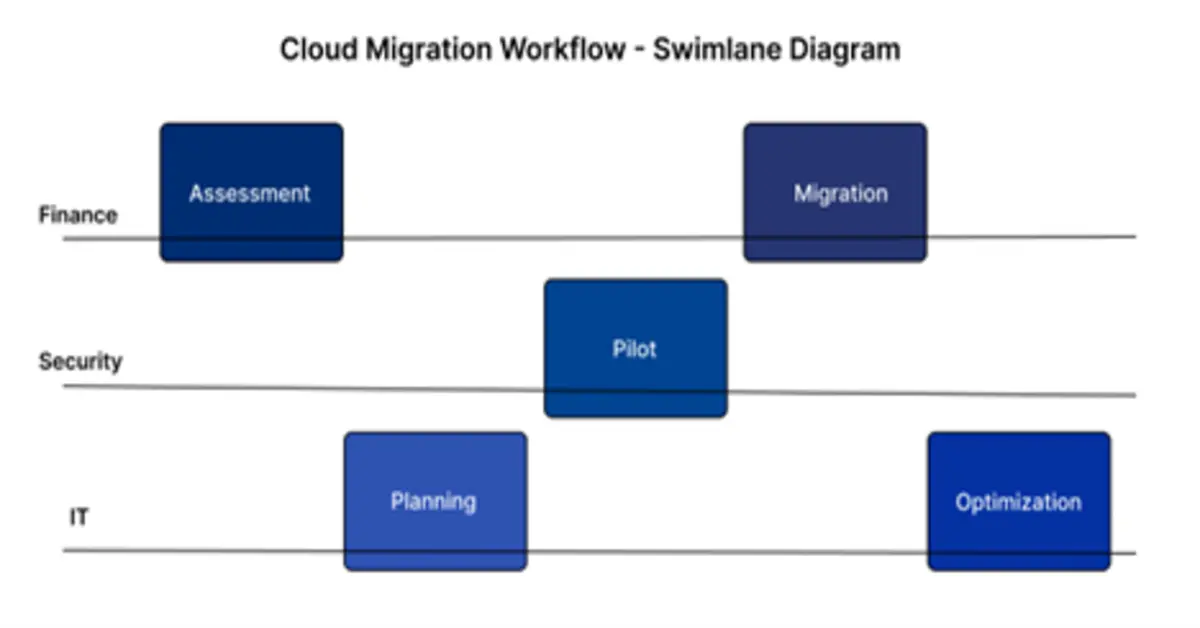Published Date : 09 October 2025
Posted by : Preeti Wani
In a strategically digital-driven world, cloud migration has turned from a tech trend into a necessity. As organizations strive for agility, scalability, and resilience, migrating workloads to the cloud is no longer optional; it's essential. The cloud guarantees optimized operations, reduced IT overhead, and the ability to drive large-scale innovation. But what exactly is cloud migration? Why are businesses across the globe moving from legacy systems to the cloud, and what does the journey consist of?
What is Cloud Migration?
Cloud migration refers to the process of moving digital assets such as data, applications, IT processes, and services from on-premises infrastructure or other clouds into a cloud computing environment. This process might consist of various approaches, depending on the company's needs. In a few cases, companies shift their existing applications to the cloud without making any changes; this is often called a lift-and-shift approach.
Cloud Migration Adoption Trends
The following line chart illustrates the evolution of cloud adoption from 2018 to 2025 across three major industries, including finance, healthcare, and retail, alongside the overall shift in cloud deployment models.

Why Businesses Are Shifting to the Cloud
- Cost Efficiency: Cloud computing reduces capital expenditure (CapEx) on servers, data centers, and hardware maintenance. According to a 2024 Research Nester report, organizations that migrated to the cloud witnessed a 32% average cost reduction in IT establishments.
- Scalability and Flexibility: Cloud environments provide on-demand resource allocation. Whether scaling vertically, i.e., adding resources to a server, or horizontally adding more servers, businesses can meet computing needs in real time.
- Security and Compliance: Despite misconceptions, cloud platforms often grant better security than on-premise setups. Major cloud providers such as AWS, Microsoft Azure, and Google Cloud invest billions in cybersecurity. 93% of businesses in a 2023 Microsoft report observed enhanced security posture after migration.
- Business Continuity and Disaster Recovery: Cloud-based backups and global redundancy options assure rapid recovery from outages. According to the Cost of a Data Breach Report by IBM released in 2023, enterprises having established cloud infrastructure showed 40% faster recovery times than those using legacy systems.
- Remote Work and Partnerships: Cloud applications promote real-time partnerships, which became the only support system during the COVID-19 pandemic. According to Flexera's 2024 State of the Cloud Report, 81% of businesses rapidly boosted their cloud usage to support remote work environments.
Cloud Migration Statistics: A Global Perspective
The following statistics provide a better understanding cloud adoption scale:
- The global cloud computing market was valued at USD 626.4 billion in 2023 and is expected to reach USD 1.56 trillion by 2030, growing at a CAGR of 13.4%.
- 94% of companies use cloud services in some form.
- Amazon Web Services (AWS) dominates the market with a 31% share, followed by Microsoft Azure with 25% and Google Cloud with 10%.
- Over 60% of organizations quoted improved data security and regulatory compliance as prime benefits of cloud adoption.
Steps in a Cloud Migration Approach
1. Assessment and Planning: Before shifting, organizations must analyze their current infrastructure, dependencies, and costs. Tools such as AWS Migration Evaluator or Azure Migrate help predict Total Cost of Ownership (TCO) and Return on Investment (ROI).
2. Selecting the Right Cloud Model: There are three primary cloud deployment models as mentioned below:
- Public Cloud: Shared environment (e.g., AWS, Azure, Google Cloud)
- Private Cloud: Dedicated environment hosted on-premise or off-site
- Hybrid Cloud: A Combination of both for enhanced control and flexibility
3. Selecting a Migration Approach: Choose between rehosting, replatforming, refactoring, or repurchasing based on application complexity and long-term goals.
4. Data Migration and Integration: This includes transferring databases, files, and configurations. Tools such as AWS Snowball, Azure Data Box, and Google Transfer Appliance enable safe physical data transfers for huge data sets.
5. Testing and Optimization: After migration, precise testing ensures that performance, latency, and security are up to mark. Optimization includes autoscaling, cost monitoring via FinOps, and improving cloud-native functionalities.

Industry Case Studies:
- Philips Healthcare: Philips shifted its HealthSuite platform to AWS to enhance operational agility and regulatory compliance. As a result, they reduced their go-to-market time by 30% and improved patient data security.
- Capital One: Capital One became one of the first U.S. banks to go all-in on the cloud, shutting down eight data centers. This resulted in enhanced fraud detection through AI/ML capabilities and $40 million in annual IT savings.
- Netflix: Netflix works entirely on AWS, using cloud-native services for content delivery, optimization, and analytics. This has allowed them to scale globally, streaming to over 190 countries.
The Future of Cloud Migration: Trends to Watch
- Multi-Cloud Strategy: More businesses are moving away from vendor lock-in by adopting a multi-cloud approach. According to a 2024 HashiCorp survey, 76% of enterprises use more than one cloud provider to improve resilience and flexibility.
- AI and ML Integration: Cloud-native AI tools such as AWS SageMaker, Azure AI, and Vertex AI help businesses to integrate intelligence into apps, improving decision-making and automation.
- Industry-Specific Cloud Solutions: Vertical clouds (e.g., Google Cloud for Retail, Azure for Healthcare) offer pre-built solutions tailored to industry compliance and operational needs.
- Edge Computing and IoT: As IoT devices expand, edge computing, processing data closer to its source, is gaining popularity. IDC anticipates that over 50% of new enterprise IT infrastructure will be launched at the edge by 2026, deeply integrated with cloud platforms.
Contact Us







